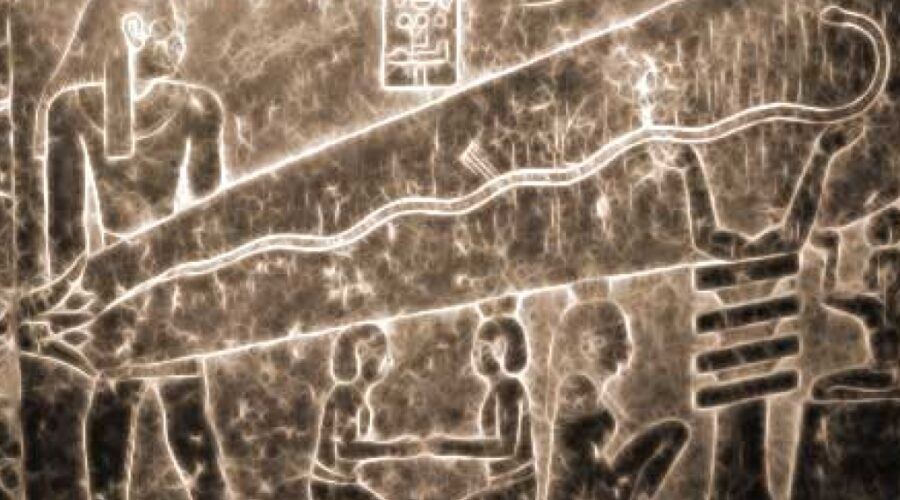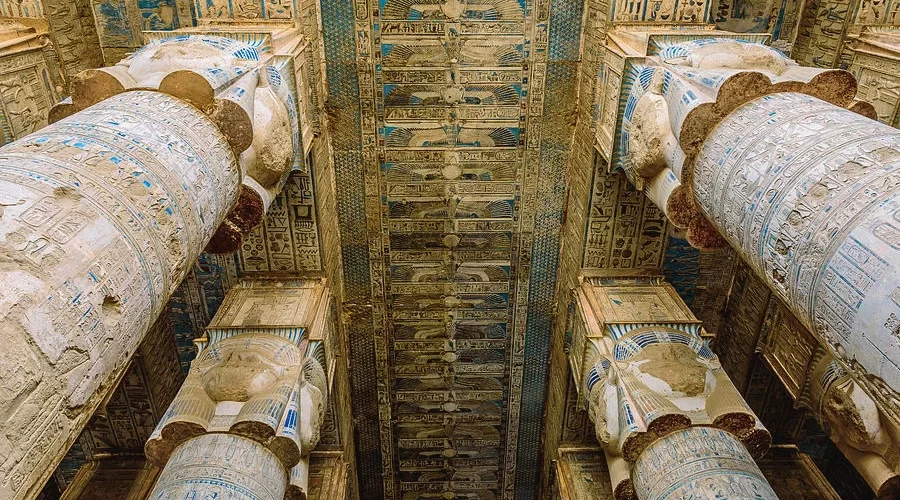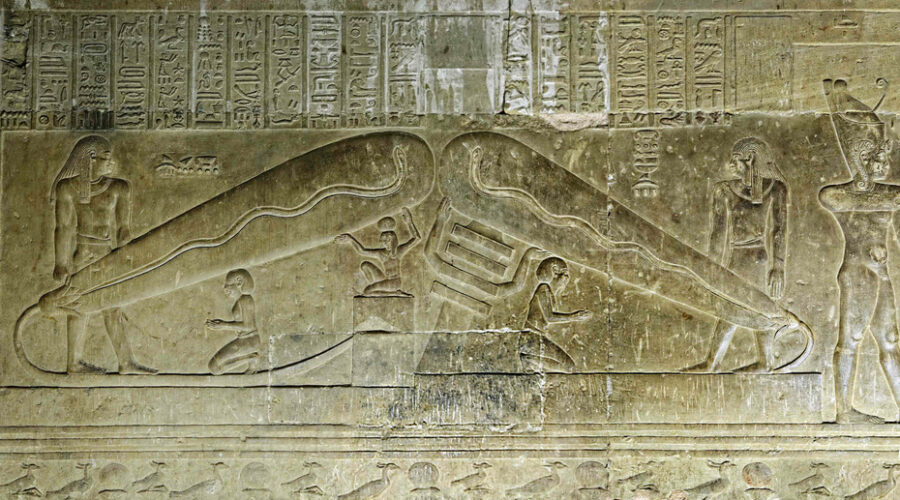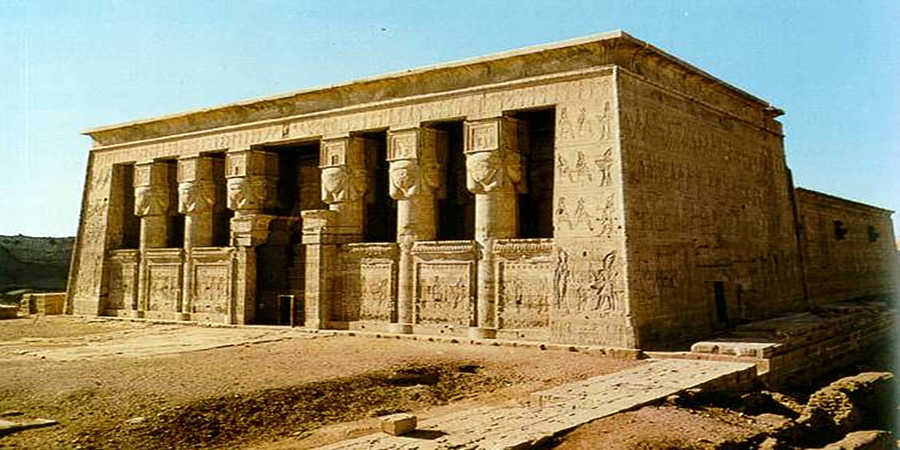The Dendera Temple Complex (ancient Egyptian: Iunet or Tantere; 19th-century English spelling in most sources, including Belzoni, was Tentyra; also Denderah) is located about 1.5 miles (2.5 km) southeast of Dendera, Egypt. Dendera is located approximately 60 kilometers north of Luxor on the west bank of the Nile. It is one of the best-preserved temple complexes in Egypt. This area was used as the sixth name of Upper Egypt south of Abydos.
Overview
The entire complex is about 40,000 square meters and is surrounded by a massive mud brick wall. Dendera was inhabited in prehistoric times, as a useful oasis on the banks of the Nile. Pharaoh Pepi I (c. 2250 BC) appears to have been built on the site and there is evidence of an 18th dynasty (c. 1500 BC) temple. Today, the earliest surviving building in the complex is the Mammisi, erected by Nectanebo II – the last of the original pharaohs (360-343 BC).
In ancient times, Dendera was associated with healing. Patients who traveled there for healing were placed in special buildings where they could rest, sleep, and converse with the gods in their dreams. This temple also has something else special: it bears the name of Cleopatra and her son, whose father was Julius Caesar.
Temple of Hathor The Temple of Hathor is the dominant building in the complex. The temple was modified in the same place from the Middle Kingdom until the time of the Roman emperor Trajan. The existing structure was built in the late Ptolemaic period and the hypostyle hall (auditorium) was built in the Roman period under Tiberius..
Mammisi
The Mammisi in Dendera dedicated to Ihy, is the last of its kind to be built. It was built not before the external wall had been constructed blocking the entrance to the previous birth chapel, Although, the dedicatory inscription is dated to the reign of Trajan, the building was started probably earlier, in the reign of Nero, what relief scenes from the pronaos indicate to.
Sanctuary of Isis
The Sanctuary of Isis forms an independent religious complex from the Great Temple, with its own brick enclosure, well, and monumental east gate. The latter is engraved with a Greek inscription dated September 23, 1 AD. 31. The year of the reign of Augustus, whose name is decorated with a small temple. It is not located on the door but on the axis of the great temple. The temple itself consists of an antechamber of three chapels with the same archaic resonant markings as the three chapels of the Temple of Hathor (per-ur, per-nou, and per-neser).
Sacred-lake
This sacred lake is one of the best preserved in Egypt and would have provided priests with sacred water for their rituals and everyday uses as well.
Gate of Domitian and Hadrian
In the Roman-era entrance to the Dendera temple complex is the monumental gate of Domitian and Trajan, set within the massive Mudbrick wall surrounding the complex, leading to an open area.
Coptic Basilica
Between the new and old birthhouses, there are remains of a Coptic Christian basilica, which can be dated to the 5th century AD. It is an outstanding example of early Coptic church architecture. This basilica showcases the unique architectural styles and elements that were prevalent among Coptic Christians during this period. The structure includes intricate stone carvings, well-preserved frescoes, and a layout that reflects the religious and cultural significance of the early Christian community in Egypt. The preservation of such a site offers valuable insights into the history and evolution of Coptic Christian practices, making it an essential subject of study for historians and archaeologists alike.
Mammisi of Nectanebo II
The oldest structure, Mammisi of Nectanebo II, is from the time of Nectanebo II, built ca. 345 BCE.
Shrine of Hathor
On the roof in the southwest corner is a small booth dedicated to Hathor, where the ritual of joining the goddess with the sun disc was performed. It has four columns of Hathor on each side. The sockets in its architecture suggest a barrel-shaped wooden roof with a double frame and a segmented gable roof, although for its purpose it had to have skylights to let in the sun’s rays. From the floor of the chapel, you can also see the light well of the chapel of Horus on the main floor below.
Sanatorium
South of the former maternity hospital of Nectanebo (Mammisi) is a clay brick “sanatorium”. This bath is the only one of its kind known in connection with an ancient Egyptian temple. Here, visitors can bathe in the holy water or spend the night witnessing the healing sleep of the goddess. On its sides were benches where the sick rested, waiting for the priests to heal them. An engraving on the base of a statue found at the site indicates that water was poured over the magical texts of the statues, consecrating them and curing all kinds of ailments and diseases. Basins used to collect holy water can still be seen at the western end.





